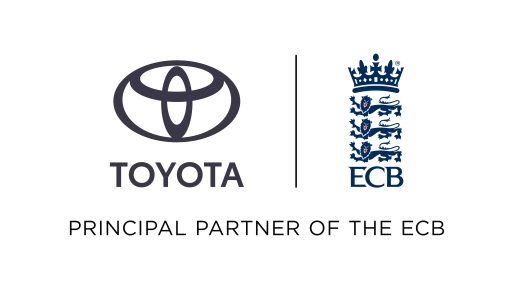Japanese car manufacturing, the modern methods of which were pioneered by Toyota, has its own specific words and terms to describe various processes, methods and philosophies. In this glossary we aim to list and describe some of these words and phrases, in order that we can all have a better understanding of the efficient Toyota Production System.
These words have all been adopted into the vocabulary of the workforce at Toyota Motor Manufacturing UK in Burnaston, Derbyshire, but they are not necessarily familiar to the outside world.
Toyota Production System – Andon (English: ‘Sign’ or ‘Signal’)
A visual aid which highlights where action is required (eg the flashing light in manufacturing plants that indicate the line has been stopped by one of the operators due to some irregularity). Andon is a typical tool to apply the Jidoka principle (also referred to as ‘autonomation’), which means the highlighting of a problem, as it occurs, in order to immediately introduce countermeasures to prevent re-occurrence.
Originating from the word for a paper lantern, it is a term that refers to an illuminated signal notifying others of a problem within the quality-control or production streams.
Activation of the alert – usually by a pull-cord or button – automatically halts production so that a solution can be found. The warning lights are incorporated into an easily visible, overhead signboard, which also identifies the area or specific workstation that has the problem.
The frequency and nature of these occasional issues are analysed as part of Toyota’s programme of continual improvement.

Gemba or genba (English: The place where the real work is done)
Now adapted in management terminology to mean the ‘workplace’ or the place where value is added. In manufacturing, it usually refers to the shop floor.
Gemba, or genba (as it is also spelt), refers to the factory floor or manufacturing floor; often an open-plan environment where each individual’s work and actions are visible to others.
Read more GR Yaris manufacturing – how it is bespoke
This visibility is exploited in order for third-parties – usually management or section leaders – to conduct regular Gemba Walks in order to identify areas where potential improvements might be made, and to better understand the workload of each associate. Walks around the frontline environment of the Genba also ensure that the production system is correctly adhered to.
Genchi Genbutsu (English: Go and see for yourself)
The best practice is to go and see the location or process where the problem exists in order to solve the problem quickly and efficiently. To grasp problems, confirm the facts and analyse root causes.
Closely related to the need to walk the Genba, this key principle suggests that to truly understand a situation you need to visit in person. The Toyota Production System requires a high level of management presence on the factory floor, so that if a problem exists in this area it should be first of all correctly understood before being solved.
The nature of the phrase is less about the physical act of visiting a site but more to do with a personal understanding of the full implications of any action within an environment as a whole.
Toyota Production System – Hansei (English: Self-reflection)
Even if a task is completed successfully, Toyota recognises the need for a hansei-kai, or reflection meeting; a process that helps to identify failures experienced along the way and create clear plans for future efforts.
An inability to identify issues is usually seen as an indication that you did not stretch to meet or exceed expectations, that you were not sufficiently critical or objective in your analysis, or that you lack modesty and humility. Within the Hansei process, no problem is itself a problem.
Toyota Production System – Heijunka (English: Production smoothing)
A levelling technique to facilitate Just-In-Time (JIT) production and to smooth out production in all departments, as well as that of suppliers over a period of time.
A vital technique for reducing waste and improving production efficiency by leveling fluctuations in performance within the assembly line. Fluctuation normally occurs through either customer demand or within production itself.
The Toyota Production System uses Heijunka to solve the former by assembling a mix of models within each batch, and ensuring that there is an inventory of product proportional to the variability in demand. Furthermore, the disruption of production flow is minimised by making sure that components are sequenced to be available in the right quantity and at the right time, while changeover periods for vital processes such as die changes within the steel presses are as short as possible; often in as little as three minutes.
Jidoka (English: automation with human intelligence)
One of the main principles of the Toyota Production System, it is the principle of designing equipment to stop automatically and to detect and call attention to problems immediately, whenever they occur (mechanical jidoka).
In the Toyota Production System, operators are equipped with the means of stopping production flow whenever they note anything suspicious (human jidoka). Jidoka prevents waste that would result from producing a series of defective items.
It also liberates operators from controlling machines, leaving them free to concentrate on tasks that enable them to exercise skill and judgement, instead of over watching each machine continuously.
A cost-effective quality control process that combines automation with a human’s ability to quickly detect abnormalities, interrupt production, and then correct them before resuming. Employing Jidoka principles throughout the production process is a vital element of the Toyota Production System, forcing imperfections to be immediately addressed by self-inspecting workers and thereby reducing the amount of work added to a defective product.
Some autonomated machines can also function in the detection process, allowing human operatives to only be engaged when alerted to a problem. Full application of Jidoka means that the process which created any issue is subsequently evaluated to remove the possibility of re-occurrence.
Toyota Production System – Just-In-Time (JIT)
The Toyota Production System is dictated by the needs of the customer, as we don’t produce anything until there is a need for it. Just-In-Time production means only making what is needed, when it is needed and in the amount needed. TPS operates a ‘pull’ system. When each vehicle is made to order, a signal is sent for parts to be replaced, thus maintaining the parts and materials inventory at a balanced level. Production and transport take place simultaneously throughout the production sequence.
JIT is a method that minimises the generation, purchasing or holding of component parts as stock items prior to full assembly line production. The primary objectives are to save warehouse space and unnecessary cost-carrying and to improve efficiency, which means organising the delivery of component parts to individual work stations just before they are physically required.
To apply this flow efficiently means relying on ordering signals from Kanban boards or by forecasting parts usage ahead of time, though this latter method requires production numbers to remain stable. Use of JIT within the Toyota Production System means that individual cars can be built to order and that every component has to fit perfectly first time because there are no alternatives available. It is therefore impossible to hide pre-existing manufacturing issues; they have to be addressed immediately.
Kaizen (English: Continuous improvement)
A process that helps to ensure maximum quality, the elimination of waste, and improvements in efficiency. Kaizen improvements in standardised work help maximise productivity at every worksite. Standardised work involves following procedures consistently and, therefore, employees can identify problems promptly. Kaizen activities include measures for improving equipment, as well as improving work procedures.
Literally ‘good change’, the word now refers to the culture and philosophy of continuously improving any department or functional process, thereby increasing productivity, quality and efficiency. Within the Toyota Production System, Kaizen humanises the workplace, empowering individual members to identify areas for improvement and suggest practical solutions. The focused activity surrounding this solution is often referred to as a kaizen blitz, while it is the responsibility of each member to adopt the improved standardised procedure and eliminate waste from within the local environment.
Toyota Production System – Kanban (English: Signboard)
A tool used in the Toyota Production System to operate the ‘pull’ type production system. It is a system that provides for the conveying of information between processes and automatically orders parts as they are used. Every item or box of items that flows through the production process carries its own kanban. Kanbans are removed from items as they are used or transported and go back to the preceding processes as orders for additional items.
Though literally translated as ‘signboard’, the Toyota-developed method has become known as a clear, sign-based scheduling system triggering the logistical chain of production and maintaining it at an optimal level. Kanban is the quick-response system through which Just-In-Time production is achieved, harmonising inventory levels with actual consumption.
Toyota has six rules for the effective application of Kanban: 1) Never pass on defective products; 2) Take only what is needed; 3) Produce the exact quantity required; 4) Level the production; 5) Fine-tune production; and 6) Stabilise and rationalise the process.
Toyota Production System – Manufacturing Supermarket
A replenishment process which ensures that all manufacturing components ordered from outside suppliers are available to be loaded and delivered in one consignment. Derived from the system used by retail supermarkets, it levels the occasional spikes in demand experienced in individual factories by requiring suppliers to smoothly and systematically gather unusually large orders to a separate holding area, or ‘virtual truck’, ahead of the regular loading schedule. This process avoids any disruption to the tempo of deliveries and last-minute rushing around to complete an order.
Muda (English: Waste)
In management terms, refers to a wide range of non-value-adding activities. For example, anything an operator has to do within a process which does not add value but does add cost. Eliminating waste is one of the main principles of the Just-In-Time system. Waste incurs unnecessary finance costs and storage costs.
The first of three types of waste mentioned within the Toyota Production System (the others being Mura and Muri), the identification and reduction of which will reduce the unnecessary consumption of resources and increase profitability.
Toyota divides Muda into seven resources that are frequently wasted: 1) Transportation — a cost that adds no value to the product but increases the risk of a product being damaged, lost or delayed; 2) Inventory — a capital outlay that if not processed immediately produces no income; 3) Motion — any damage inflicted through the production process, such as normal wear and tear in equipment, repetitive stress injuries, or by unforeseen accidents; 4) Waiting — products that are not in transport or being processed; 5) Over-processing — when more work is done than necessary, or when tools are more complex, precise or expensive than necessary; 6) Over-production — larger batches or more products being made than is required; and 7) Defects — the loss involved in rectifying faulty parts or products.
Toyota Production System – Mura (English: Unevenness or irregularity)
Eliminating unevenness or irregularities in the production process is one of the main principles of the Just-In-Time system, the main pillar of the Toyota Production System.
The second of three types of waste mentioned within the Toyota Production System, notably identified and leveled through the application of Heijunka principles and Kanban devices. Workflow is also smoothed by requiring members to operate multiple machines — also known as ‘multi-process handling’ — within any particular process, and by predicting and preparing for times of high demand.
Muri (English: Overburden)
Eliminating overburden of equipment and people is one of the main principles of the Just-In-Time system, the main pillar of the Toyota Production System. To avoid overburden, production is evenly distributed in assembly processes.
The third of three types of waste highlighted within the Toyota Production System, requiring the balancing of manufacturing pace to allow members sufficient time to achieve the correct standard of work. A reduced time frame will be too burdensome to achieve the objective, while the allowing of too much time is a waste of resource. (Related: Takt Time [derived from German word Taktzeit, or ‘cycle time’] — matching the pace of production with customer demand and the available work time).
Nemawashi (English: Laying the groundwork or foundation)
The first step in the decision making process. It is the sharing of information about decisions that will be made, in order to involve all employees in the process. During Nemawashi, the company seeks the opinion of employees about the decision.
Literally translated as ‘going around the roots’, particularly in the sense of digging around the roots of a tree to prepare it for transplant.
Within the Toyota Production System — and Japanese culture itself — the word has come to mean an informal process of laying the foundation and building a consensus of opinion before making formal changes to any particular process or project. Successful application of Nemawashi allows changes to be carried out with the consent of all parties.
Poka-Yoke (English: Mistake-proofing)
Failsafe devices in the production process (sensors, templates etc) that automatically stop the line when an abnormality occurs.
A Poka-Yoke is any part of a manufacturing process that helps a Toyota member avoid (yokeru) mistakes (poka). Its purpose is to eliminate defects by preventing, correcting, or highlighting errors as they occur – for example, a jig that holds parts for processing might be modified to only allow them to be held in the correct arrangement.
In a wider sense, the term can refer to any behaviour-shaping constraint designed into a process to prevent incorrect operation by the user.





I think you mean ‘Gemba’.
Assuming the article originally said “Genba”:
The ん in genba (げんば) can be pronounced as either n or m before a consonant. At the end of a word – it can never begin a word – it is always pronounced like an n. Some people say that it is closer to an m when it comes before a b or p, but it always sounds like an n to me. Of course, there are generational, regional and personal differences in enunciation.
Both n and m are correct romanizations, but different systems and transcribers have their preferences. Mine is always “n”.
the correct word is geNba, with N.
when translated to English and any other language in the world it became geMba with M.
Nothing wrong with either way.
Several years ago,I worked Quality at MMNA, in Illinois, we used what we called Mis Yoke devices to detect and prevent defects. My question is, is there such a thing as a Mis Yoke or is it just called a Poke Yoke? Is there a difference?
If applying the Toyota Production Method to an IT system (including in a car), what Japanese word wuld you use to describe security?
Hi George,
Whilst we are Toyota products experts, understanding of Japanese language is not a requirement to work at Toyota UK. As far as we know, there are a few different ways to say ‘security’ in Japanese.
We recommend a internet search, will provide far more insight than we can ever provide.
Thanks.
Hey there!
Would it be considered a form of waste to knowingly allow future waste to potentially be introduced? Would doing so be considered a mistake?
For example, recognizing that a particular part could easily be installed wrong because there is no Poka-Yoke in place to guide the employee in installing the part correctly (or to even alert them until it was installed incorrectly when it causes further problems down the line), but not taking action to prevent that from occurring.
Or would it be wasteful to implement some form of Poka-Yoka before such a mistake as installing a part incorrectly has actually occurred?
The correct way of releasing a process that will have that possibility is to properly placing the QUALITY GATE to detect it (this would be for a manual process); where definitely you are placing at the end of that operation an inspection. (this is where you can combine the Production responsible of Quality in the line, and not only a QC-inspector) Usually to make the “next operator to confirm the correct placement” and if detected either the line corrects if its something fast to replace, if it’s something difficult to correct then the products gets kick and it adds to your daily track of FTY which will make you to see RPN value and that will make you rank and define the priority for a corrective action.
Here the evolution in the process design:
The best moment to include Pokayoke is in the design of your equipment. This needs to be considered in the budget. The Design stage is very important for the process Muda, Mura
IF NOT PokaYoke per design, then place it in the process
IF NOT PokaYoke per process, then must be a quality gate to detect it.
No. It is part of your PFMEA if you know that mistake would have a high RPN, you want a Pokayoke in place, which will then allow you to drop for producing to ZERO.